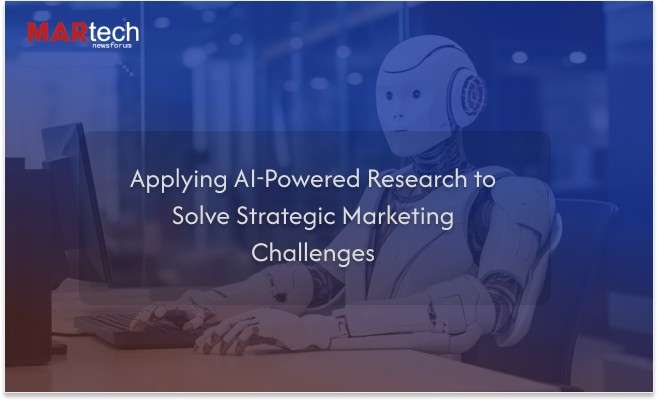
In today’s high-velocity digital economy, waiting weeks—or even days—for traditional marketing research to surface insights is no longer viable. Consumer behavior, competitive dynamics, and media channels shift by the hour, not the quarter.
Marketers face mounting pressure to make strategic decisions in real time, yet most still rely on outdated processes: surveys that take weeks to field, focus groups with limited scope, and static dashboards that struggle to interpret data across fragmented systems.
That’s where AI-powered research is stepping in.
Whether it’s predicting brand sentiment shifts, evaluating product-market fit, optimizing pricing, or spotting whitespace opportunities, AI is transforming marketing research from reactive to proactive—and from lagging to leading.
“AI doesn’t replace strategy—it supercharges it,” says Lena Hartman, VP of Strategic Planning at Axis & Row. “It allows marketers to test, learn, and evolve at the speed of culture.”
What Is AI-Powered Marketing Research?
AI-powered research blends data science, machine learning, and NLP (natural language processing) to extract insights from massive, multi-source datasets. Unlike traditional research methods, which rely on fixed inputs and small sample sizes, AI models can process:
- Social media conversations in real time
- Voice of customer data from reviews, chats, and forums
- Competitive movements across markets
- Internal performance and behavioral data
- Trends across search, content, and purchase behavior
These insights help marketers solve complex questions like:
- Which messaging will resonate most with our target audience?
- What unmet needs exist in our category?
- How is brand perception evolving in response to cultural trends?
- Where are our competitors gaining traction—and why?
Key Use Cases: Where AI Research Adds Strategic Value
1. Customer Segmentation & Persona Development
AI tools can cluster customers by behavioral patterns, emotional sentiment, and journey paths—creating dynamic personas based on real-time behavior, not assumptions. These evolve as your audience does.
2. Real-Time Brand Health Tracking
Instead of waiting for quarterly brand lift studies, AI-powered sentiment analysis lets marketers track brand perception live across channels, identifying shifts in trust, relevance, or messaging resonance.
3. Campaign Intelligence & Creative Testing
Using AI models trained on ad performance, language patterns, and engagement metrics, marketers can simulate campaign outcomes and optimize creative elements before launch.
“AI lets us pre-test 10 concepts in an afternoon—what used to take three weeks in a focus group,” says Aditya Mera, Creative Strategy Lead at Klair & Co.
4. Competitive Intelligence
With AI crawling public datasets, PR content, and digital signals, brands can track competitor messaging, promotions, and sentiment—helping teams stay a step ahead and identify openings in positioning.
5. Market Entry & Innovation Analysis
Before launching a new product or entering a new market, AI platforms assess category dynamics, search trends, and emerging behaviors—de-risking big bets with smarter foresight.
Popular AI Research Tools in the Marketing Stack
A growing number of platforms are enabling AI-powered insights for marketers. Some leading tools include:
- Crimson Hexagon / Brandwatch – AI-based social listening and audience insights
- Relative Insight – Compares language differences across demographics or platforms
- ChatGPT / Claude / Jasper – For synthesizing research and testing messaging with generative AI
- Black Swan Data – Predicts consumer trends using billions of online data points
- Yabble / Remesh – AI-powered qualitative research and audience dialogue platforms
- SparkToro – Identifies where audiences spend time online, who influences them, and how they talk
These tools empower marketers to shorten research cycles, deepen understanding, and pivot with precision.
Overcoming Barriers to Adoption
While the potential is immense, adopting AI-powered research is not without challenges:
- Data fragmentation: Many organizations lack unified data sources to train or feed AI models.
- Trust & transparency: Marketers need to understand how AI generates insights—especially in highly regulated industries.
- Skill gaps: Strategy teams must learn how to interpret and act on AI-driven findings without losing human judgment.
- Cost & scalability: Some enterprise-grade tools require substantial investment and operational alignment.
The key is to balance automation with strategic thinking, ensuring AI augments human insight—not replaces it.
How Leading Brands Are Using AI-Powered Research Today
🟢 P&G: Uses AI to scan social and review data to develop new personal care products tailored to emerging skincare concerns among Gen Z.
🔵 Nike: Combines AI research with first-party data to design hyper-targeted campaigns based on micro-moment behavior.
🟡 Unilever: Applies AI to map regional language variations in sustainability conversations, adapting messaging accordingly.
🔴 Adobe: Uses its Sensei AI engine to help marketers personalize content and predict campaign performance based on historical data.
“The best strategy today is adaptive strategy,” says Nicole Graham, Global Head of Insights at Huxley. “AI makes it possible to stay in sync with your audience and your market—even when both are constantly changing.”
Conclusion: AI + Strategy = Competitive Advantage
AI-powered research isn’t a shortcut—it’s an evolution of marketing strategy itself. It allows marketers to:
- Replace assumptions with real-world behavior
- Respond to market changes instantly
- Experiment without massive upfront investment
- Align decisions with what truly moves the customer
In a world where speed, relevance, and precision are the new standards for strategic success, AI-powered research gives marketers a clear edge.
The future of strategic marketing isn’t just creative—it’s computational. And the smartest marketers will know how to blend both worlds.
Key Takeaways:
- AI is transforming marketing research from static and reactive to real-time and predictive.
- Use cases span customer segmentation, brand tracking, creative testing, and market forecasting.
- AI platforms empower faster, smarter decisions—but still require human interpretation.
- Forward-looking brands are embedding AI-powered research across strategy, product, and media.
- Strategic marketers must evolve their skill sets to guide AI tools toward meaningful outcomes.